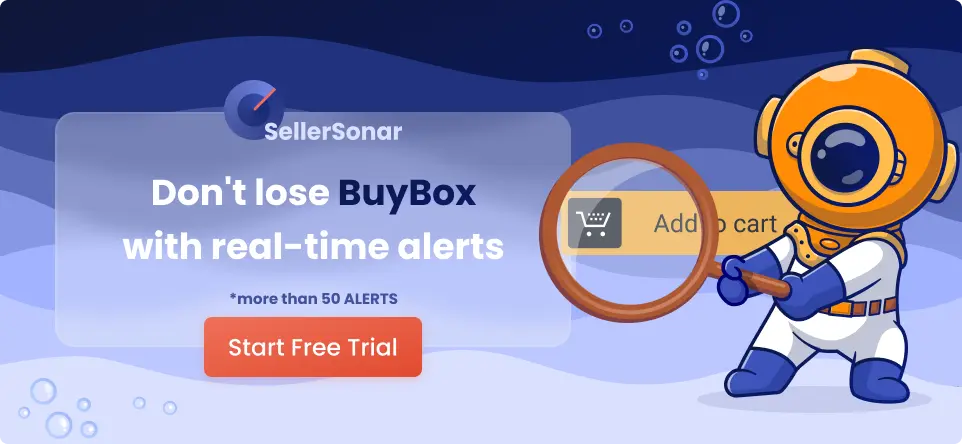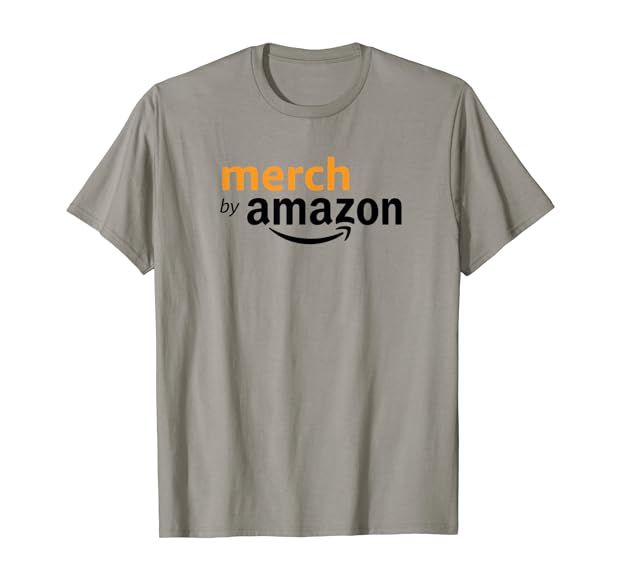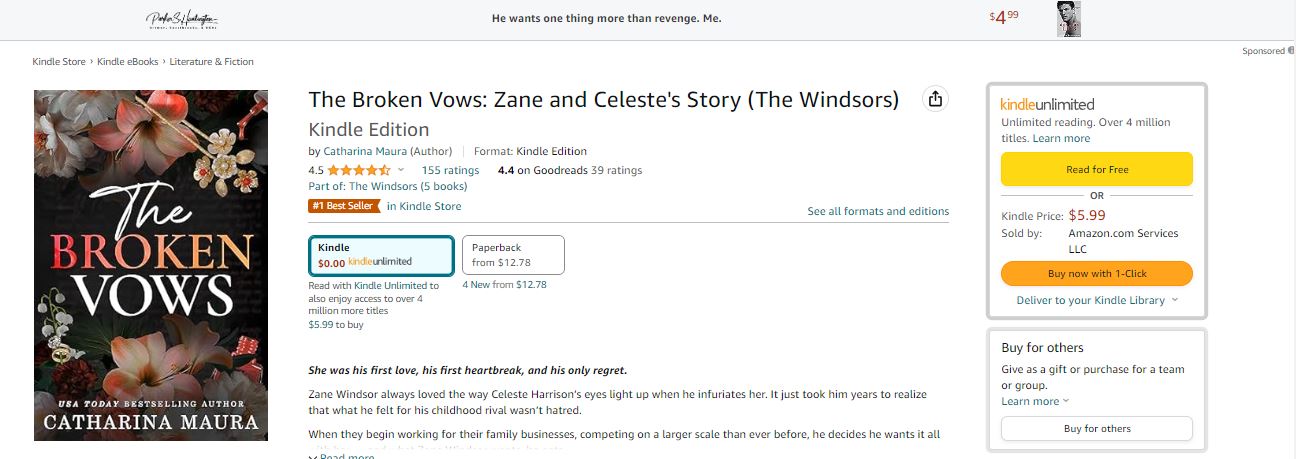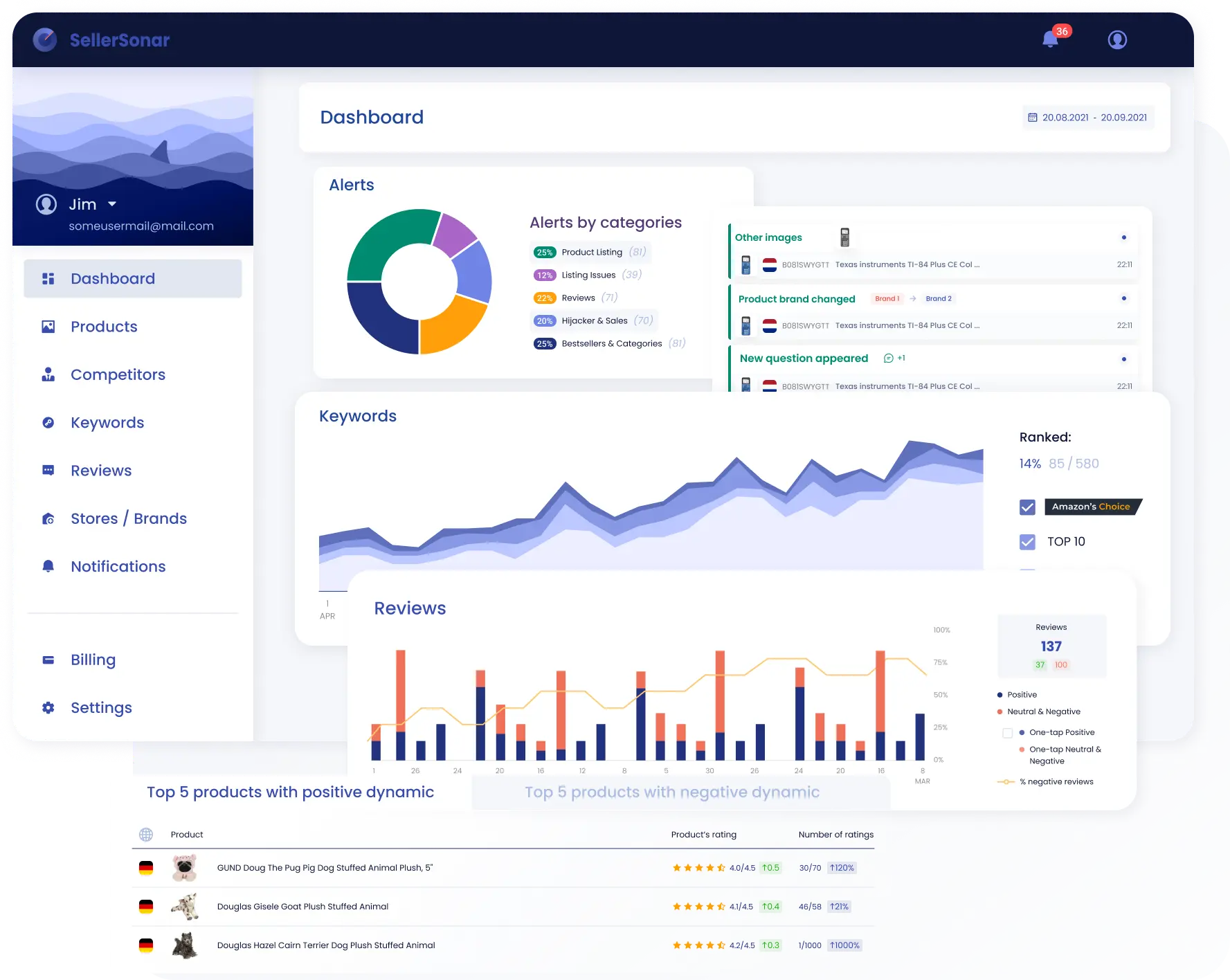Table of Contents
For aspiring and seasoned Amazon sellers alike, the world’s largest online marketplace offers boundless opportunities for financial success. Yet, the traditional model of buying, stocking, and managing inventory can be a daunting and capital-intensive endeavor. The good news is that there’s a way to tap into Amazon’s vast customer base without the need to invest in a warehouse full of products. Welcome to the world of selling on Amazon without inventory!
In this comprehensive guide, we’ll walk you through the strategies, tools, and techniques that will allow you to thrive as a seller while minimizing your inventory-related risks and costs. We will discuss how to sell products on Amazon without inventory, how to become an Amazon seller without inventory, and how to make money on Amazon without inventory.
Whether you’re just starting your e-commerce journey or looking to optimize your existing business, you’ll discover the key steps to succeed in the lucrative realm of inventory-free selling. Prepare to unlock the potential of Amazon’s vast marketplace and revolutionize your approach to e-commerce. Let’s get started on your path to selling on Amazon without the burden of inventory holding you back.
What Is Selling on Amazon Without Inventory?
Selling on Amazon without inventory refers to a business model where sellers list and sell products on Amazon’s platform without physically stocking or storing the products themselves. Instead, they rely on various methods to fulfill customer orders directly from suppliers, manufacturers, or third-party fulfillment centers. This approach is also commonly known as “inventory-free selling” or “inventoryless e-commerce.”
Types of selling without inventory
Dropshipping: In a dropshipping model, sellers partner with suppliers or manufacturers who handle the storage, packaging, and shipping of products directly to customers. Sellers list these products and only purchase items from their suppliers when a customer places an order. That means sellers do not maintain physical inventory but act as intermediaries between suppliers and customers.
Fulfillment by Amazon (FBA): While FBA typically involves storing inventory in Amazon’s fulfillment centers, it can also be adapted for an inventory-free approach. Sellers can use FBA to fulfill orders with products that are stored and managed by third-party suppliers or manufacturers. In this case, Amazon handles the fulfillment process, including shipping and customer service.
Merch by Amazon: For sellers in the business of custom-designed products like apparel, accessories, or books, print-on-demand services allow them to create and sell products on Amazon as orders come in. Sellers produce these items and ship them only when there is demand, eliminating the need for inventory storage.
Third-Party fulfillment centers: Some sellers partner with third-party fulfillment centers that store, pick, pack, and ship products on their behalf. That allows sellers to maintain greater control over inventory levels and shipping processes while still avoiding the need for their own warehouse.
Why Selling on Amazon Without Inventory is Popular
Selling on Amazon without inventory has become increasingly popular due to its potential advantages, including reduced upfront costs, minimized inventory risk, scalability, and flexibility. However, it also comes with challenges, such as maintaining product availability, ensuring timely fulfillment, and effectively managing relationships with suppliers or fulfillment partners.
Successful inventory-free sellers must carefully select reliable suppliers, manage their product listings and pricing effectively, and prioritize customer service to maintain a positive reputation and customer satisfaction.
Advantages of selling without inventory
Lower capital investment
One of the most significant advantages of selling without inventory is the dramatically reduced upfront capital requirements. Traditional retail models often demand substantial investments in purchasing and storing inventory. With inventory-free selling, you can allocate your capital more efficiently towards other critical aspects of your business, such as marketing and product development.
Reduced risk
Holding inventory can be a risky endeavor. Unsold products tie up your funds, and there’s always the possibility of products becoming obsolete or losing value over time. Inventory-free selling minimizes these risks, allowing you to adapt quickly to changing market trends and consumer preferences.
Scalability
Selling without inventory facilitates easy scalability. You can expand your product catalog without the worry of warehousing constraints. This scalability potential empowers you to explore new niches and markets swiftly, capitalizing on emerging opportunities.
Focus on marketing and customer experience
Without the burden of managing inventory, you can channel your efforts into refining your marketing strategies and enhancing the overall customer experience. This focus can lead to increased sales and improved customer satisfaction, fostering long-term success.
Streamlined operations
Inventory-free selling simplifies various operational aspects, such as order fulfillment and inventory management. This simplicity translates to cost savings and allows you to run a more efficient and agile business.
Disadvantages of selling without inventory
Limited control over stock availability
When you rely on dropshipping or third-party fulfillment, you may face occasional challenges in ensuring product availability and timely shipping. This lack of control can lead to potential customer dissatisfaction.
Competitive landscape
As the popularity of inventory-free selling grows, competition in Amazon’s marketplace intensifies. It becomes crucial to differentiate your offerings and brand to stand out in a crowded field.
Logistical challenges
Coordinating with suppliers and managing shipping logistics can be more complex when compared to traditional inventory management. Effective communication and partnerships with reliable suppliers become paramount.
Dependency on partners
Inventory-free sellers often rely on third-party suppliers or fulfillment centers. If these partners face issues, it can directly impact your ability to fulfill orders and maintain customer satisfaction.
Finding Winning Products
Selling on Amazon without inventory can be a lucrative venture if you can identify winning products that resonate with the marketplace. Success in this model hinges on effective product research, assessing profit potential, and finding examples of successful inventory-less products. Let’s dive into these essential aspects:
Tools and methods for product research
Amazon Best Sellers: Start your product hunt by exploring Amazon’s Best Sellers list in various categories. These lists reveal the most popular products on the platform, giving you insights into trending items with high demand.
Market research software: Leverage third-party market research tools such as Jungle Scout, Helium 10, or AMZScout. These tools provide valuable data on market trends, estimated sales, and competitor analysis. You can discover products with favorable sales ranks, which often indicate high demand.
Google Trends: Use Google Trends to assess the long-term viability of a product idea. It offers information on the popularity of specific search terms over time, helping you identify seasonal trends and evergreen niches.
Social media and forums: Actively participate in or observe discussions on social media platforms and niche-specific forums like Reddit. Customer feedback and comments can provide insights into trending products and consumer preferences.
Supplier directories: Explore supplier directories like Alibaba or AliExpress to identify products that you can source through dropshipping or print-on-demand services. These directories often showcase trending items and can provide information on supplier reliability.
Evaluating Potential Profit
Cost analysis: Calculate the total costs associated with selling a particular product. That should include expenses like product sourcing, shipping, Amazon fees, marketing, and any other relevant costs. Ensure that the potential profit margin is sufficient to cover these expenses and leave room for a reasonable profit.
Competitor analysis: Study your competitors to understand their pricing strategies, customer reviews, and product listings. Identify opportunities to differentiate your product or offer unique value to customers.
Demand and seasonality: Consider the demand for the product throughout the year. Some products may be seasonal, while others have consistent year-round demand. Be prepared to adjust your inventory and marketing strategies accordingly.
Shipping and fulfillment: Choose a fulfillment method that aligns with your business goals and provides reliable delivery to customers. Whether it’s dropshipping, third-party fulfillment, or FBA, ensure it suits your chosen product niche.
Examples of successful inventory-less products to sell on Amazon
In your quest to find winning products, remember that trends can change rapidly, so it’s essential to stay updated and adapt your product selection accordingly. Additionally, customer feedback and continuous market research are invaluable in sustaining a successful inventory-less Amazon business.
Specific examples of successful inventory-less products on Amazon
E-books: E-books are a popular inventory-less product to sell on Amazon because they are easy to create and distribute, and there is a high demand for them. Popular e-book genres include fiction, non-fiction, self-help, and business.
Online courses: Online courses are another popular inventory-less product to sell on Amazon. Popular course topics include business, marketing, personal development, and technology.
Software: Software is an excellent inventory-less product to sell on Amazon because it is easy to distribute, and there is a high demand for it. Popular software categories include productivity, security, and gaming.
Music: Music is another great inventory-less product to sell on Amazon. Popular music genres include pop, rock, country, and hip-hop.
Print-on-demand products: Print-on-demand products are a great way to sell custom-designed products without having to hold any inventory. Popular print-on-demand products include t-shirts, mugs, and posters.
Handmade products: Handmade products are a great way to sell unique and creative products without having to hold any inventory. Popular handmade products include jewelry, crafts, and home décor.
Dropshipped products: Dropshipped products are a great way to sell a wide variety of products without having to hold any inventory. Popular dropshipped products include electronics, clothing, and home goods.
Services: Services are a great way to sell your skills and expertise on Amazon. Popular services include graphic design, web development, and social media marketing.
Key Stages of Selling
Selling on Amazon without inventory offers numerous advantages, but it also requires careful planning and execution across these key stages. By diligently preparing, implementing effective selling strategies, and providing exceptional post-sale support, you can establish a thriving e-commerce business while minimizing the challenges associated with managing physical inventory.
Selling on Amazon without inventory involves a series of crucial stages to ensure a successful and sustainable e-commerce business. These stages encompass preparation, the selling process, and post-sale activities. Let’s break down each stage.
Preparation Stage
Create a seller account on Amazon
The journey begins by setting up a seller account on Amazon. Choose an Individual or Professional account, depending on your expected sales volume. Registering as a seller allows you to access Amazon’s vast customer base and utilize various selling tools.
Set up a seller profile on Amazon
Create a compelling seller profile that instills trust in potential buyers. Include detailed information about your business, such as your brand story, logo, and contact details. An appealing seller profile enhances your credibility and encourages customers to engage with your listings.
Conduct market research
Effective market research is crucial for identifying profitable product opportunities. Analyze market trends, assess demand, and explore product niches that align with your business goals. Tools like Amazon Best Sellers, third-party analytics software, and competitor analysis help you make informed decisions.
Selling Stage
Pricing strategies for inventory-less products
Determine competitive pricing strategies that balance profitability and customer affordability. Account for all costs, including sourcing, shipping, Amazon fees, and marketing expenses. Regularly monitor and adjust your pricing to remain competitive in the marketplace.
Creating Amazon listings
Create detailed and optimized product listings that attract and inform potential buyers. Include high-quality images, keyword-rich product titles, informative descriptions, and essential product attributes. Listings should be accurate, compelling, and compliant with Amazon’s guidelines.
Attracting buyers
Effectively market your products to attract buyers. Utilize Amazon Advertising, social media promotions, and search engine optimization (SEO) techniques to increase product visibility. Encourage customer reviews and leverage Amazon’s advertising tools to boost sales.
Post-sale stage
Order processing
Efficiently handle order processing, whether you are dropshipping, using third-party fulfillment, or another fulfillment method. Ensure prompt order confirmation, shipping, and tracking updates. Accuracy and timeliness are key to customer satisfaction.
Customer communication
Maintain open and clear communication with customers. Address inquiries, resolve issues, and provide exceptional customer service. Proactive communication helps build trust and encourages repeat business.
Troubleshooting
Expect and be prepared to troubleshoot issues that may arise. These could include shipping delays, product defects, or customer disputes. Develop solutions and policies to handle these situations promptly and professionally.
Amazon Listing Tools: SellerSonar
To successfully sell on Amazon without inventory, you can use seller tools. SellerSonar is a comprehensive Amazon seller tool that offers a variety of features to help you optimize your listings, track your competitors, and stay ahead of the market.
What can SellerSonar do?
- Identify the most relevant keywords for your products: SellerSonar‘s keyword research tool helps you find the keywords that potential customers are using to search for products like yours. That allows you to optimize your listings for better visibility and sales.
- Analyze your competitors’ strategies: SellerSonar’s competitor research tool gives you insights into your competitors’ keyword rankings, listings, pricing, and Best Seller Rank (BSR). This information can help you identify areas where you can improve your own listings and strategies.
- Track your product’s performance over time: SellerSonar’s product tracking tool helps you track your product’s sales, reviews, ratings, and BSR over time. This data can help you identify trends and make adjustments to your listings and strategies as needed.
SellerSonar features
Hijacking alerts: SellerSonar can monitor your listings for hijacking, which is when unauthorized sellers attempt to sell counterfeit or similar versions of your products. If SellerSonar detects any hijacking activity, it will send you an alert so you can take action immediately.
Competitor Research: SellerSonar allows you to analyze competitors with its competitor research tool. You can get data about competitors’ keyword rankings, listings, pricing, and BSR and, based on that, outbeat them.
Price change alerts: SellerSonar can track the prices of your competitors’ products and send you alerts when their prices change. That allows you to stay competitive and ensure that you are offering the best prices possible.
Product listing alerts: SellerSonar can monitor your listings for any changes, such as price changes, title changes, or image changes. That allows you to stay informed about your listings and take action if necessary.
Product review and rating alerts: SellerSonar can monitor your product reviews and ratings and send you alerts when you receive a new review or rating. That lets you respond to customer feedback promptly and manage your online reputation.
FBA calculator: SellerSonar’s FBA calculator can help you estimate your profit margin for FBA products. This tool takes into account factors such as fees, product dimensions, freight cost, and weight.
Ready to experience the benefits of SellerSonar for yourself? Try the demo account and register for a 29-day free trial today!

Strategies for Successful Selling without Inventory
Selling on Amazon without inventory offers unique opportunities, but success hinges on the right strategies and careful management. Here are some key strategies to thrive in this business model.
Golden rules of Amazon sales management
Continuous market research: Stay updated on market trends, competitor activities, and customer preferences. Regularly evaluate your product selection to ensure relevance and profitability.
Pricing strategies: Set competitive and dynamic prices that consider all costs. Regularly analyze your pricing to remain competitive while maintaining profitability.
Quality customer service: Prioritize excellent customer service by promptly addressing inquiries and issues and providing accurate information. Positive customer experiences lead to better reviews and repeat business.
Optimized listings: Craft informative, keyword-rich product listings with high-quality images. Use Amazon’s A+ Content and Enhanced Brand Content features for enhanced product descriptions.
Tips for order handling and customer service
Efficient order processing: Ensure that your order processing and fulfillment methods are efficient and reliable. Timely order confirmation, accurate shipping, and tracking updates are essential for customer satisfaction.
Clear communication: Maintain clear and transparent communication with customers. Address inquiries and issues promptly and always provide realistic delivery estimates.
Returns and refunds: Develop clear policies for returns and refunds. Handle returns promptly and professionally to avoid negative customer feedback.
Feedback management: Encourage positive reviews and manage negative feedback effectively. Respond to negative reviews with a resolution or clarification when appropriate.
Avoiding common mistakes that can lead to account suspension or failure
Intellectual property violations: Avoid selling counterfeit or trademarked products. Ensure that you have the necessary rights and permissions for any products you list.
Policy violations: Familiarize yourself with Amazon’s policies and guidelines. Violating these can result in account suspension. Pay attention to restricted products and categories.
Inadequate inventory management: If you’re relying on third-party suppliers, ensure they maintain sufficient inventory to fulfill orders promptly. Running out of stock can harm your reputation.
Poor quality products: Selling low-quality or defective products can lead to customer dissatisfaction and account issues. Source products from reputable suppliers.
Listing and pricing optimization strategies for maximizing profit
Keyword research: Use keyword research tools to identify relevant and high-search-volume keywords. Incorporate these into your product listings for better visibility.
Competitor analysis: Monitor competitor pricing, product descriptions, and customer reviews. Identify opportunities to differentiate your offerings or improve your listings.
Dynamic pricing: Implement dynamic pricing strategies that adjust prices in response to market changes, demand fluctuations, and competitor actions.
Optimize images: High-quality images that showcase product features can significantly impact conversions. Use multiple images to provide different angles and views.
Amazon Advertising: Invest in Amazon Advertising campaigns to promote your products and boost visibility. Optimize your ad spend for maximum ROI.
By following these strategies and staying vigilant in your Amazon sales management, you can build a successful inventory-less Amazon business while mitigating common pitfalls and delivering exceptional value to your customers.
Conclusion
In this ultimate guide, we’ve explored the world of selling on Amazon without the burden of physical inventory. This innovative approach offers significant advantages for e-commerce entrepreneurs. Let’s recap the key benefits and provide some essential recommendations for successful inventory-less selling on Amazon.
Recap and key benefits of inventory-less selling on Amazon
Lower capital investment: Start and grow your Amazon business with minimal upfront costs, as you don’t need to invest in inventory storage.
Reduced risk: Inventoryless selling eliminates the risk of holding unsold stock, allowing you to stay agile in response to market changes.
Scalability: Quickly expand your product range and explore new niches and markets thanks to the flexibility of this model.
Focus on marketing and customer experience: With less time spent managing inventory, you can concentrate on improving marketing strategies and delivering exceptional customer service.
Streamlined operations: Inventoryless selling simplifies operations, leading to cost savings and increased efficiency.
Recommendations for successfully managing sales on Amazon without inventory
Market research: Continuously monitor market trends, conduct competitor analysis, and adapt your product selection accordingly.
Pricing strategies: Implement competitive pricing and regularly review and adjust to stay competitive and profitable.
Customer service: Prioritize excellent customer service by addressing inquiries and issues promptly.
Policy compliance: Familiarize yourself with Amazon’s policies and guidelines to avoid violations and adhere to product category restrictions.
Optimized listings: Create informative, visually appealing product listings with keyword optimization.
Dynamic marketing: Invest in Amazon Advertising to boost product visibility and optimize your advertising spend.
With these strategies and the advantages of inventory-less selling, you’re well-equipped to build a thriving Amazon business. Success requires adaptability, continuous learning, and unwavering commitment to customer satisfaction. Unlock your full potential in the world of e-commerce, where opportunities abound for those who embrace this innovative approach.




